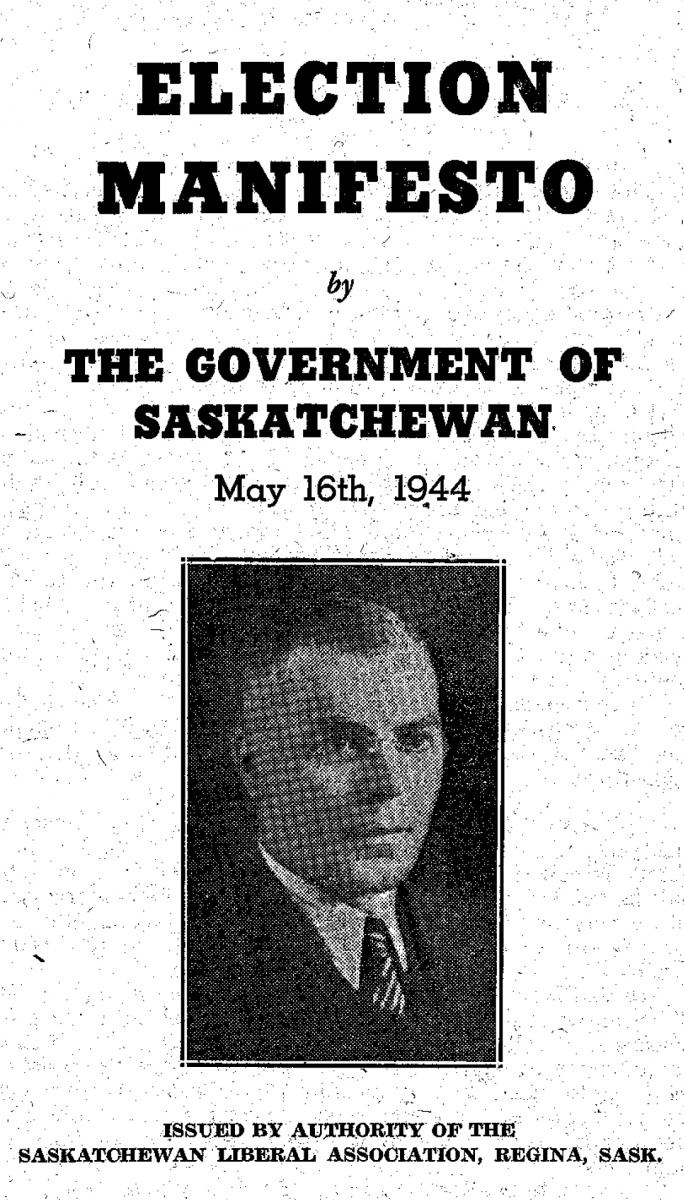Grade 12: The CCF in Saskatchewan
A Study in Continuity and Change
The Co-operative Commonwealth Federation (CCF) came together as a party in the 1930s in western Canada, in response to the economic devastation suffered in the region during the Great Depression.
The CCF believed that radical change was required to improve conditions for ordinary, hard-working people. From the time of its inception until it formed a government, the CCF's goal was to explain how it would manage things differently then the governing parties of the time.
During the 1944 Saskatchewan provincial election campaign, the Co-operative Commonwealth Federation campaigned for change, sharing its vision at political rallies, in public speeches, through radio broadcasts, and in printed publications like pamphlets and flyers.
What problems had the CCF identified in Saskatchewan, Canada, and the world at this time?
What solutions had the CCF proposed to solve those problems?
How much and what kind of change (ie. political, economic, technological, environmental, philosophical, population) was proposed by the CCF to bring about those solutions?
A study of primary source documentary evidence from the time can reveal answers to these important questions. Keep the questions in mind as you review the sources available below, which include speeches, manifestos, brochures, and other publications that were created and distributed by the CCF Saskatchewan Section to share its vision of change with the people of that province.

Thomas Clement Douglas
Leader of the CCF, 1944.
PAS Photo R-A3421.
People sometimes ask me: 'What is the main difference between the CCF and the old line parties? Well, that is a very easy question to answer..."
- T.C. Douglas, M.P., radio broadcast on February 2, 1943
Sample CCF Pamphlets
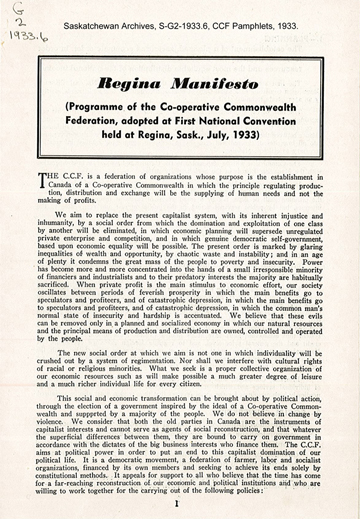
PAS Photo S-G2.1933.6
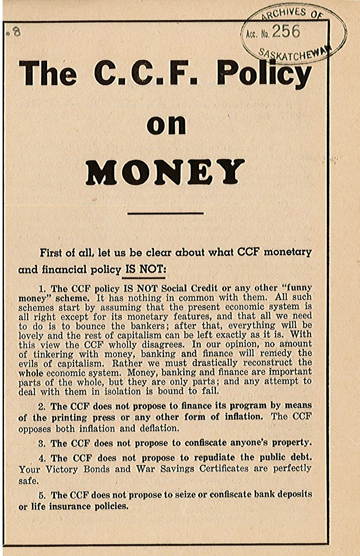
PAS Photo S-G1.1944.8
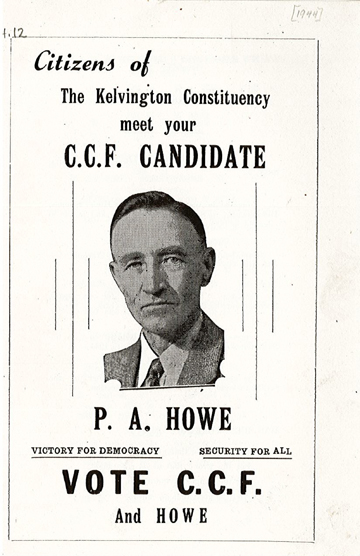
PAS Photo S-G1.1944.12
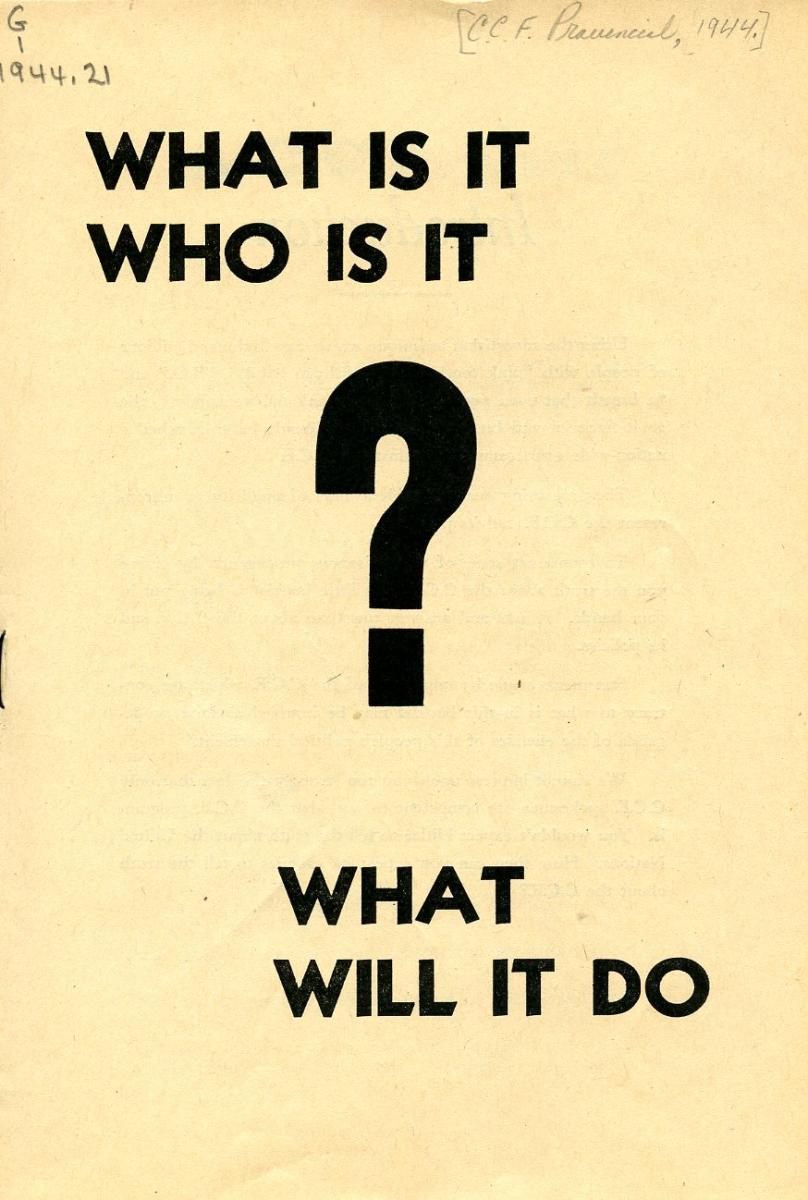
PAS Photo S-G1.1944.21
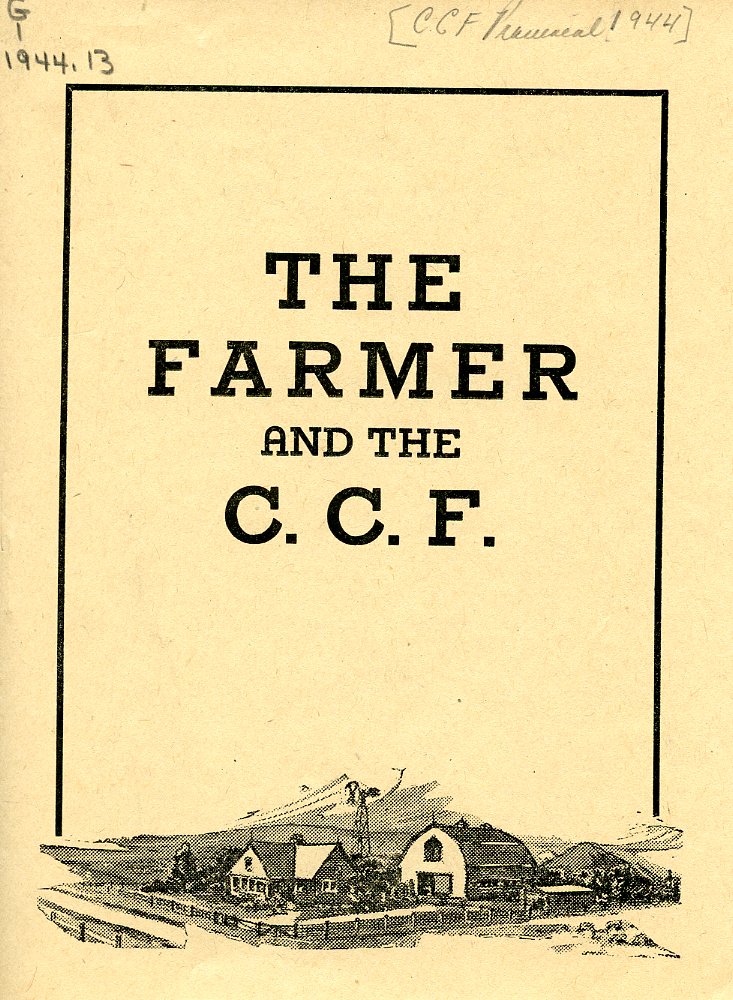
PAS Photo S-G1.1944.13
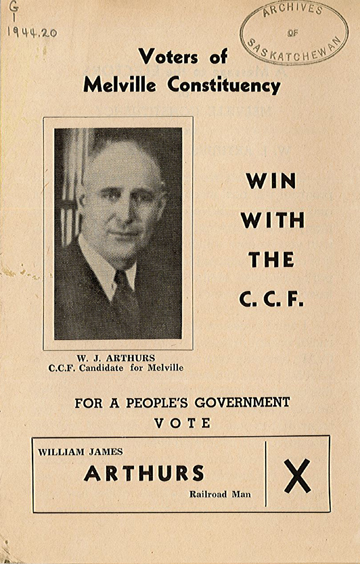
PAS Photo S-G1.1944.20
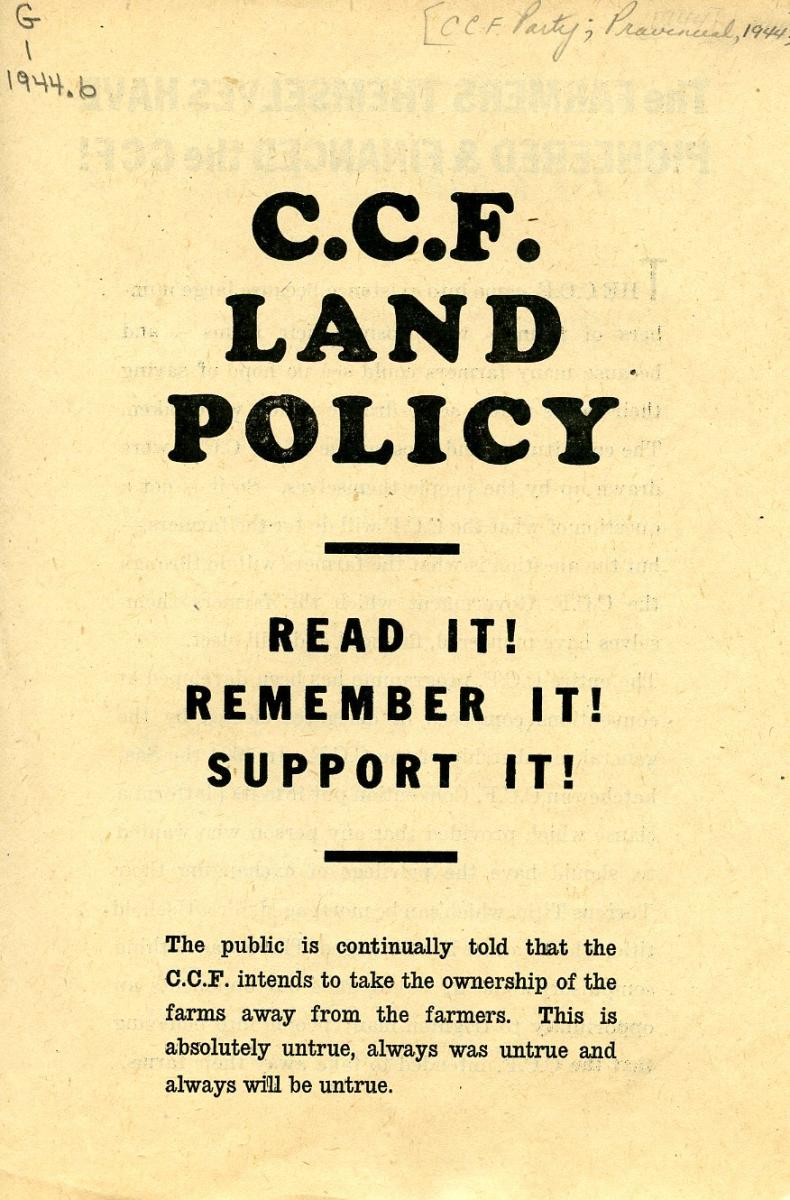
PAS Photo S-G1.1944.6
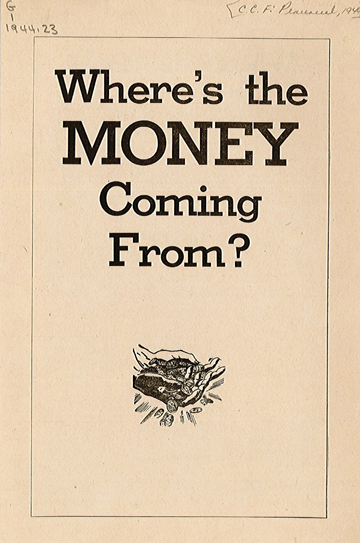
PAS Photo S-G1.1944.23
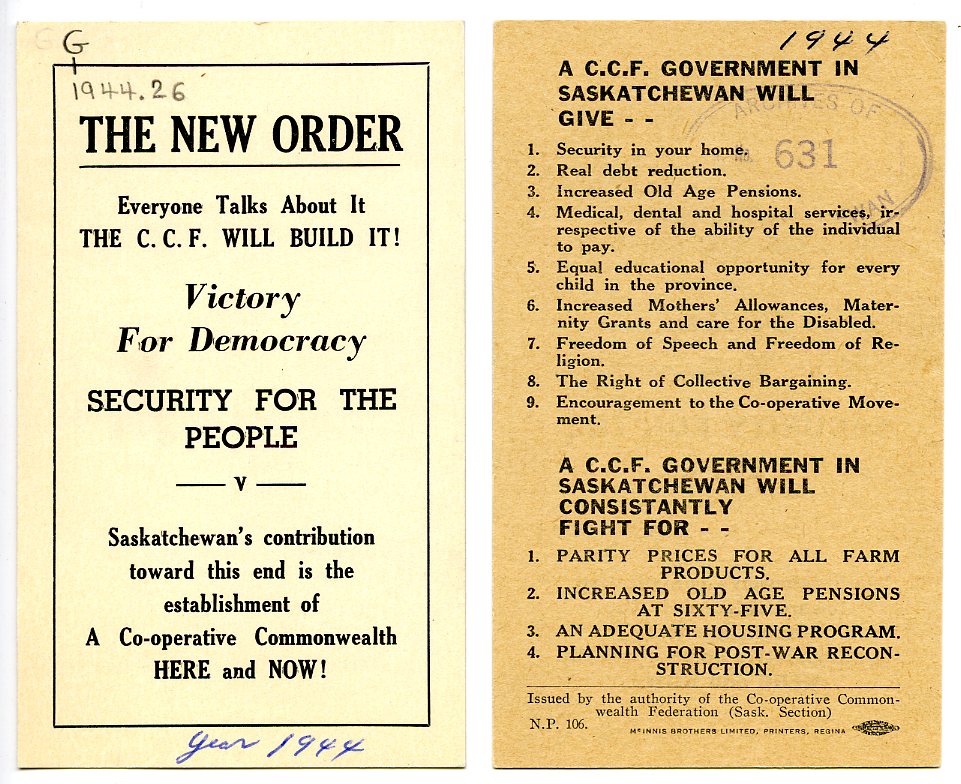
PAS PhotoS-G1.1944.26
How Did The CCF Platform Compare To The Saskatchewan Liberal Government's 'Election Manifesto' Before The Provincial Election In 1944?
This documentary evidence outlines promises that were made and changes that were proposed during the 1944 election campaign, by both the hopeful CCF and the governing Liberals.
However, some questions remain.
- Once in power, how successful was the CCF in making the changes that it envisioned in the years running up to its victory in 1944?
- Was that change as far-reaching as the party hoped, or did it fall short of expectations?
Read more and find out.
Historical Thinking Concepts:
Continuity and Change: How can we make sense of the complex flows of history?
Review the criteria for understanding and working with continuity and change.
Guidepost 1: Continuity and change exist together. Expressing chronology of events helps to reveal this.
Guidepost 2: The varying pace and direction of change, as well as turning points, can be identified.
Guidepost 3: Progress and decline are recognized, understanding that progress for one may be decline for another.
Guidepost 4: Periodization helps us organize our thinking about continuity and change.
